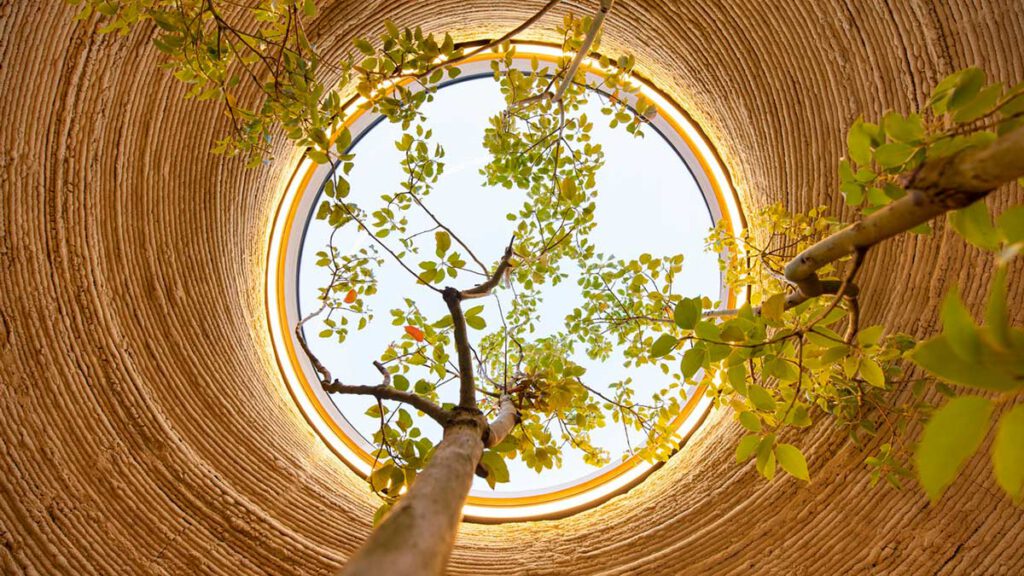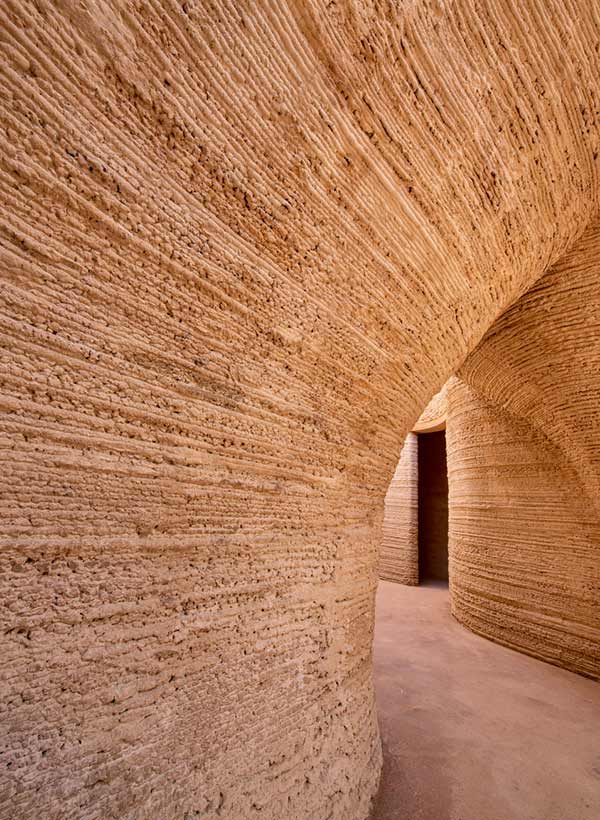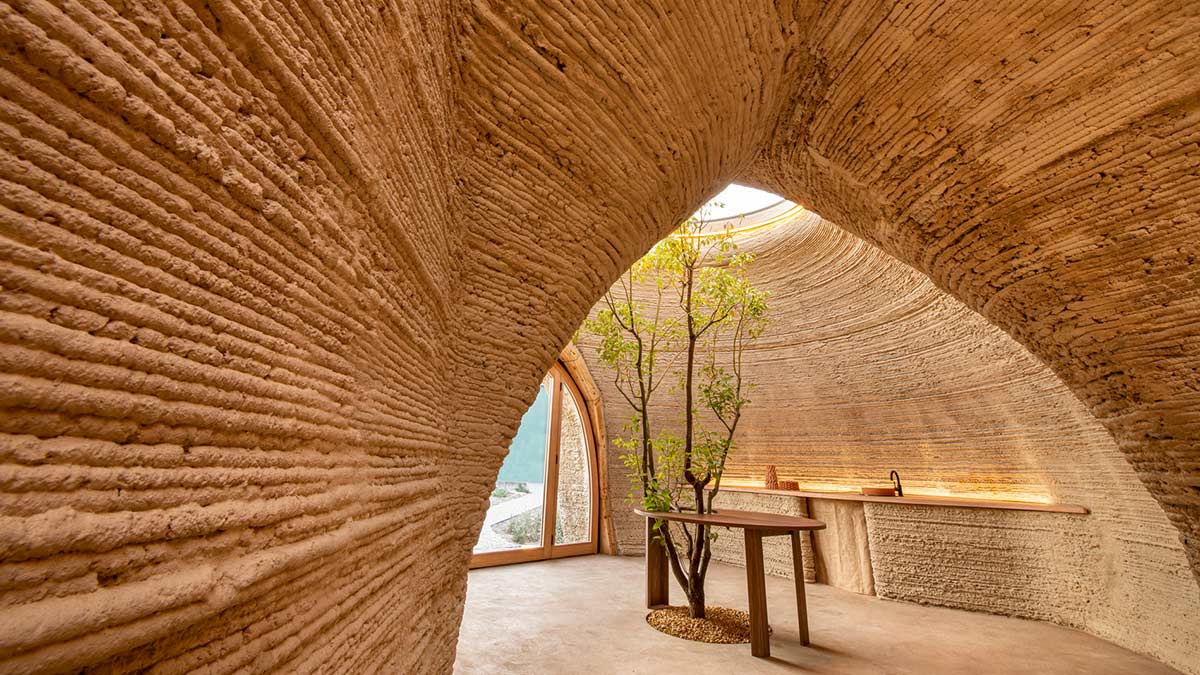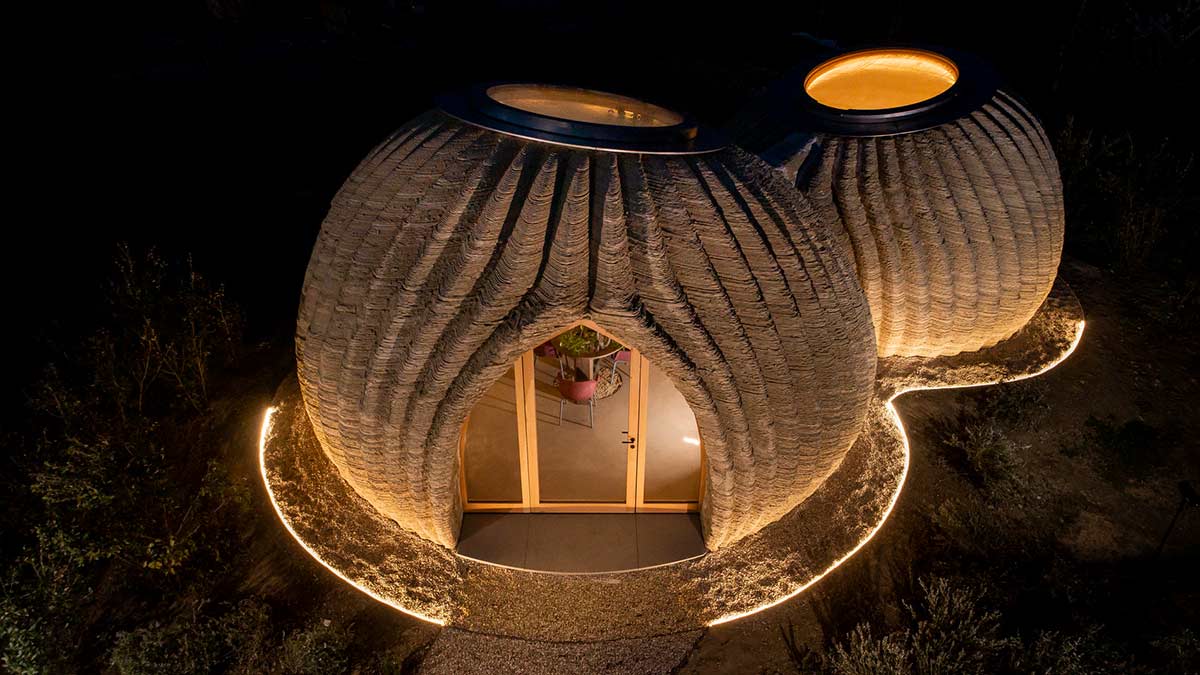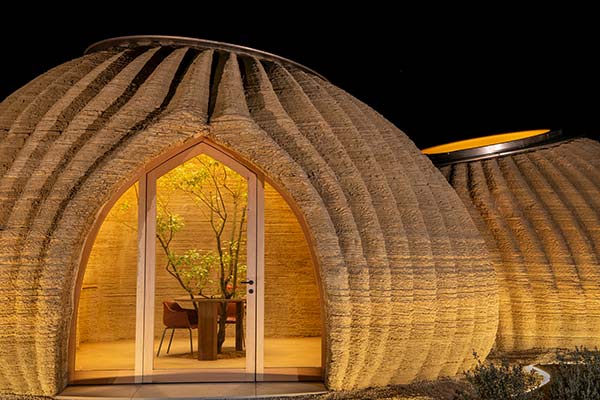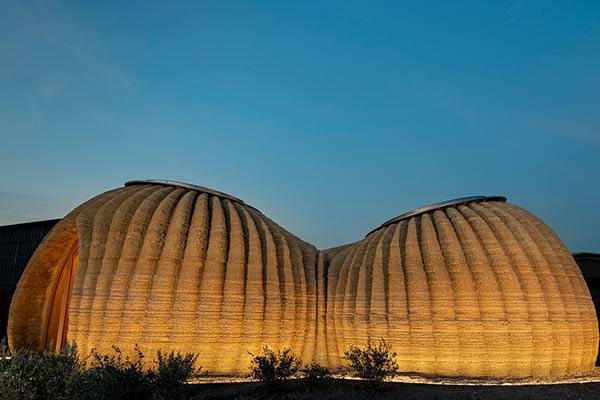The house made by 3D printers
The round construction known as TECLA has created quite a stir. Having teamed up as 3D printing pioneers, WASP and Mario Cucinella Architects have produced the first CO₂-free housing prototype printed entirely from raw earth.
So this is what it looks like, the home of the future. The recognizable combined approach is probably its most astounding feature. On the one hand, there is a strictly primeval element to the construction: the cave-like dome made of earth, which looks like something that has been built by an animal. And on the other, its use of state-of-the-art 3D printing technology that is set to revolutionize the construction industry in the coming years. Past and present united. This combined approach is also reflected in the name of the project. The zero-emission housing prototype is known as TECLA – a word created from “technology” and “clay”.
We like to think that TECLA is the beginning of a new story.
Mario Cucinella, architect
This innovative construction is situated in the Italian district of Massa Lombarda in the Emilia-Romagna region. It is built from the raw earth found in the direct vicinity of the house. And thus dispenses with long transport routes, high-emission production, use of limited raw materials, and also any waste with its expensive disposal costs. After all, dust returns to dust – even the non-religious among us know that. This perpetual cycle of raw materials also forms the basis of the new ecological approach called “Cradle to Cradle”.
Helping the world to resolve its crises
TECLA is the brainchild of Massimo Moretti, founder of the 3D printing innovator WASP, and Mario Cucinella, creative director of Mario Cucinella Architects. Together they have set out to find realistic solutions to the major problems of our time using their innovative housing project. Their aim is not just to make a contribution to alleviating the climate crisis, but also highlight how global housing crises can be dealt with in times of migration and natural disasters.
Massimo Moretti explains the thinking behind his project: “TECLA shows that a beautiful, healthy, and sustainable home can be built by a machine, giving the essential information to the local raw material. TECLA is the finger that points to the Moon. The Moon is the home, as a birthright, for everybody on the planet.”
3D printer builds in record time
All that is needed for a zero-emission clay house is a 3D printer with robotic arms, such as the Crane WASP that was already used at the Burning Mal Festival in the Nevada desert. According to Moretti, it is the first printer worldwide that works on different levels and with a modular system. Complex software enables optimization of the construction process and ensures that the robotic arms are synchronized when in operation. Each of the two units has a printing area of 50 square metres. This allows individual housing units to be completed within only a few days.
The aesthetics of this house are the result of a technical and material effort.
Mario Cucinella, architect
The TECLA prototype requires 200 hours of printing, 7000 machine codes, 350 layers with a thickness of 12 mm each, 150 kilometres of extrusion and 60 cubic metres of natural materials, with the average energy consumption of the high-tech printer at less than 6 kW. The result is a house with 60 square metres that is also equipped with a kitchen/living space and a sleeping area with bathroom. Some of its furnishings are also printed using earth and integrated into the construction. Other pieces of furniture have been sourced from local firms and are designed to be recyclable or reusable, as specified by the circular economy.
An honest form
“We like to think that TECLA is the beginning of a new story,” says architect Mario Cucinella. “It would be truly extraordinary to shape the future by transforming this ancient material with the technologies we have available today.” The characteristic organic form of this sustainable construction project is created from the continuous curve in the outer wall, opening at the top in a round skylight window. The geometry of the outer grooves is mainly responsible for the structural design of the construction. Information on the climate conditions influenced the form of the project, as did the composition of the earth mixture.
The space between the outer shell and inner wall contains a parametric structure that achieves optimum values for thermal mass, insulation and ventilation. As architect Mario Cucinella emphasizes, the team examined more than just purely aesthetic considerations for the design: “The aesthetics of this house are the result of a technical and material effort. It is an honest form, a sincere form.”
Text: Gertraud Gerst
Translation: Rosemary Bridger-Lippe
Images: WASP, Mario Cucinella Architects
